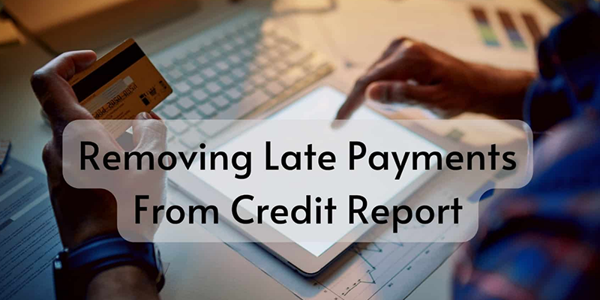Dividend Investing For Beginners: A Simple Guide
People talk about making money in their sleep. For some, this is no laughing matter. They are not doing magic. They are doing something clever and straightforward: investing in dividends. However, many people jump into it without fully understanding its meaning. Some think it is a way to get rich fast. Others hear one story and rush in. Then they get confused or disappointed. That is not how it works. It is time to break this down, with sense and real knowledge.
What Is Dividend Investing?
Dividend investing involves purchasing stocks of companies that distribute a portion of their profits to shareholders as dividends. These payments are called dividends. They are usually paid every three months. Some companies pay monthly or annually.

The idea is to build a portfolio of these stocks so that the investor receives regular payouts. Over time, the money earned from these dividends can grow big. But it is not magic. It is not instant. It is a long game.
Why Some Companies Pay Dividends
Not all companies pay dividends. Many growing companies prefer to reinvest all their profit to grow the business faster. However, companies that are stable and have been in operation for a long time often pay dividends to reward their shareholders.
Think about companies that provide services people always need—like telecom, utilities, or consumer goods. These are often where investors find strong dividend stocks. A notable example is the group known as the Dividend Aristocrats, which comprises S&P 500 companies that have increased their dividends for 25 consecutive years or more.
These are not small or new businesses. They are giants.
The Two Ways Investors Make Money From Dividend Stocks
Here is where people miss it. There are two clear ways to make money from dividend investing:
1. Regular Dividend Payments
This is the cash the investor receives every month or quarter. It is like a reward for holding the stock.
2. Growth of the Stock Price
Yes, some dividend stocks also grow in value over time. If the investor sells later, they might gain even more. But this is not guaranteed. Stock prices can also fall.
So don’t confuse dividend investing with just buying and selling stocks. The focus is more on long-term income than quick profit.
How To Start With Dividend Investing
Many people jump into dividend investing without first learning the basics. Then they ask silly questions or expect significant results too fast. Let's not do that. Here's how smart beginners start:
Step 1: Open a Brokerage Account
This is where the buying happens. Choose a broker that allows access to U.S. or global stock markets. Some brokers even allow you to reinvest your dividends automatically using a Dividend Reinvestment Plan (DRIP).

Step 2: Know What to Look For
Don't just chase the stocks with the highest yield. A very high dividend yield may indicate that the company is in financial trouble. Instead, check these:
Dividend Yield (good range: 2% to 6%)
Payout Ratio (shows how much profit is paid out)
Dividend Growth History
Company Strength and Industry
Tools like Morningstar give helpful data on dividend-paying stocks. Learn to read and understand the numbers.
Step 3: Start Small
Nobody says you must start with millions. Even with \$100, it is possible to begin. The key is to be consistent. Buy a little at a time, reinvest dividends, and hold your positions for years.
Dividend Investing Is Not Salary
Dividing investing can replace a full-time job quickly. That is not the case for most people.
To earn $1,000 per month in dividends, an investor might need to invest more than $300,000, depending on the dividend yield. That takes time, patience, and a solid plan. It is not magic.
And even if someone reaches that goal, it does not mean they can stop thinking or working. Companies can reduce or suspend dividends during difficult times. Stocks can drop in value. Savvy investors stay alert, always watching the market and company news.
Common Mistakes Beginners Make
Let’s be honest. Too many people get it wrong. They see one YouTube video or one tweet, and they think they are experts. Then they do these:
Chase very high yields – This often leads to a loss.
Ignore company health – A sick company will not pay well for long.
Forget taxes – Dividends are usually taxed.
Try to live off dividends too early – Patience is part of the plan.
Nobody should rush in without doing proper research. And just because someone else says a stock is good does not mean it is suitable for everyone.
Tools That Help
Some tools and websites help track dividend income, stock performance, and payout history. Many professional investors use platforms like Investopedia’s stock simulator to practice and test ideas without risk.
Learning first, then doing, is the smart move. People who skip this step often regret it.

Why Patience Wins
Some people spend five minutes learning about dividend investing and expect magic. That's like planting corn today and hoping to harvest it tomorrow. Dividend investing is a slow build. It takes months or years to grow into something meaningful.
But if done right, it can become one of the most potent forms of passive income. It brings peace of mind and can support long-term wealth.
Protecting The Investment
Even if someone builds a strong dividend portfolio, there are things to watch out for:
Company earnings reports
Changes in interest rates
New company leadership
Market crashes or economic shifts
No investment is 100% safe. The smart thing is to stay informed and flexible. If a company stops paying dividends or shows weak signs, it might be time to adjust the plan.
The Bigger Picture
Dividend investing is not just about money. It teaches discipline, patience, and thoughtful decision-making. It also fosters a mindset that prioritises long-term wealth over short-term gains.
People who continue to learn, invest wisely, and avoid flashy shortcuts usually win in the end.
Sources
SP Global Dividend Aristocrats Data







